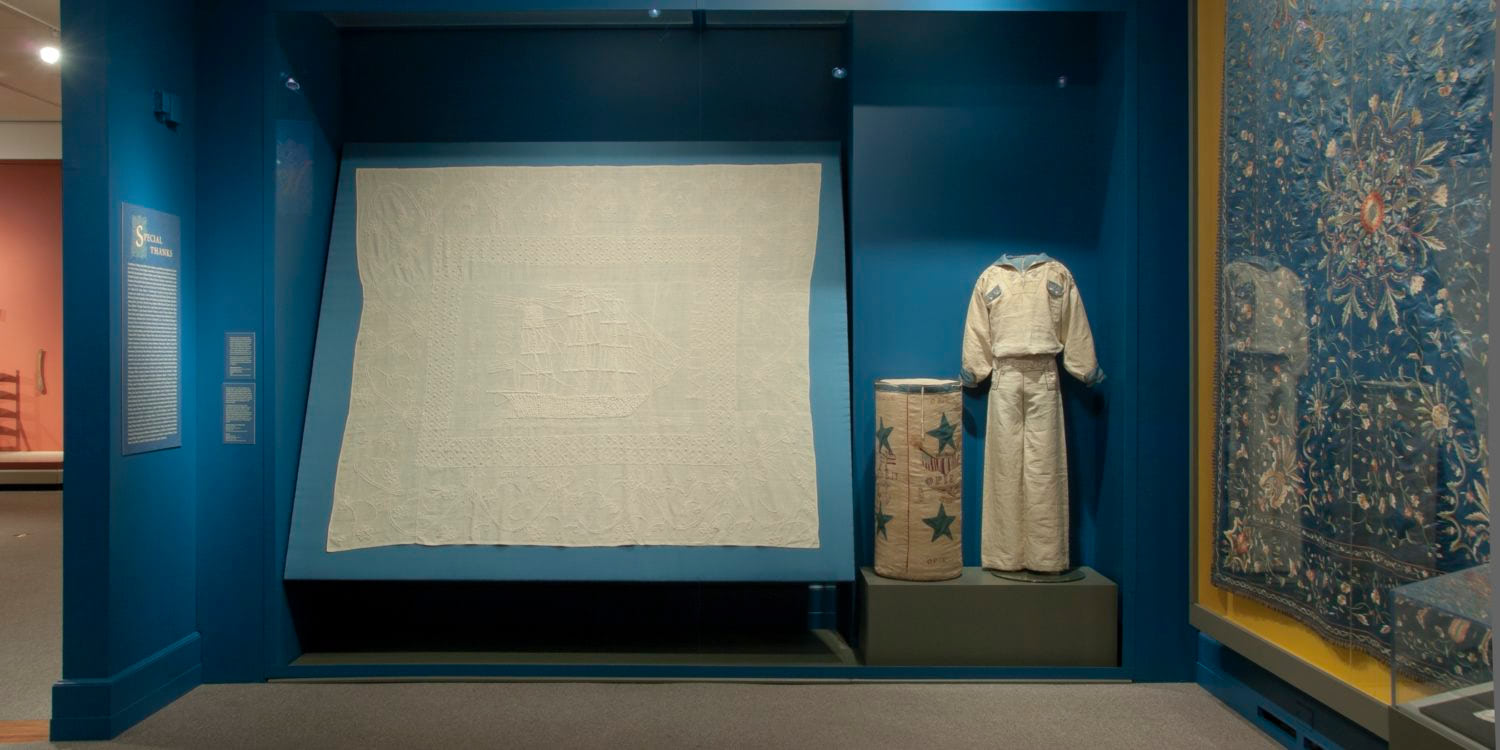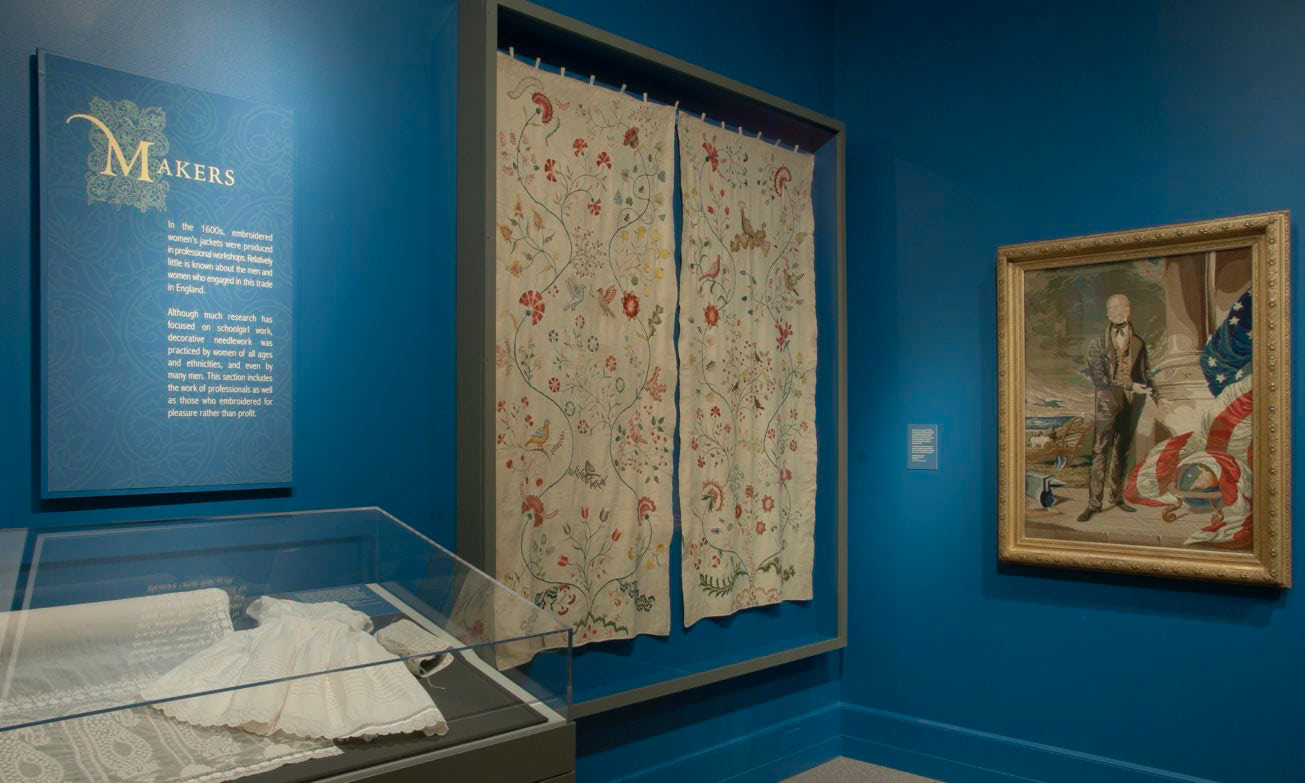The Challenge
- To protect a major needlework collection, taking into account the fragility, exquisite detail, and vulnerability of the works, during exhibition while providing an optimal viewing experience.
The Solution
Optium Museum Acrylic®
Acrylic is half the weight of glass and shatter resistant
Safeguards against injury and damage to the fragile textiles and visitors.
Anti-reflective
Allows viewers to see the textiles without distracting reflections.
99% UV blocking
Protects the textiles from the most damaging light wavelengths, helping prevent fading and degradation.
Anti-static protection exceeds that of glass
Immediately eliminates static charge, safeguarding the fragile textiles. Makes for safer, easier framing and less cleaning.
Abrasion resistant
A durable hard coat protects against scratches from cleaning and general exposure to the public.
The Work
In 2006 Plimoth Plantation in Massachusetts began an exciting and innovative project to accurately re-create a 17th-century embroidered woman’s jacket. The process of designing and making what has become known as the Plimoth Jacket has shed new light on the tools and methods employed by the skilled embroiderers of the 1600s. Using the Plimoth Jacket as a touchstone, With Cunning Needle delved into the designs, materials, techniques, and makers of embroidery over four centuries and explored the history of embroidery and invites visitors to take a closer look at the wide array of styles, technology, and people reflected by this art form.
More Info
- Embroidered bedcover, worked by Katurah Strong Reeve and daughter Katurah Reeve Van Duzer, Newburgh, NY; 1820, Cotton. 1966.139, Gift of Mr. and Mrs. David Stockwell.
- Summer uniform of an enlisted sailor, worn by Warren Opie, Burlington, NJ; 1850-54, Linen, silk, wool. 1967.933a,b, Bequest of Henry Francis du Pont.
- Sea bag, owned by Warren Opie, Burlington, NJ; 1850-54, Linen, silk, wool, cotton. 1967.932, Bequest of Henry Francis du Pont.
- For more information on the exhibition, click here
- For information on the behind-the-scenes activity that went into making the exhibition, click here.
- Click here to view images of two large-format installations: one utilizing two sheets of Optium, supported in a wall niche, to display three embroidered objects and the other installing Optium in a wall case. Courtesy, Winterthur Museum, With Cunning Needle Exhibition, photo by Jim Schneck

